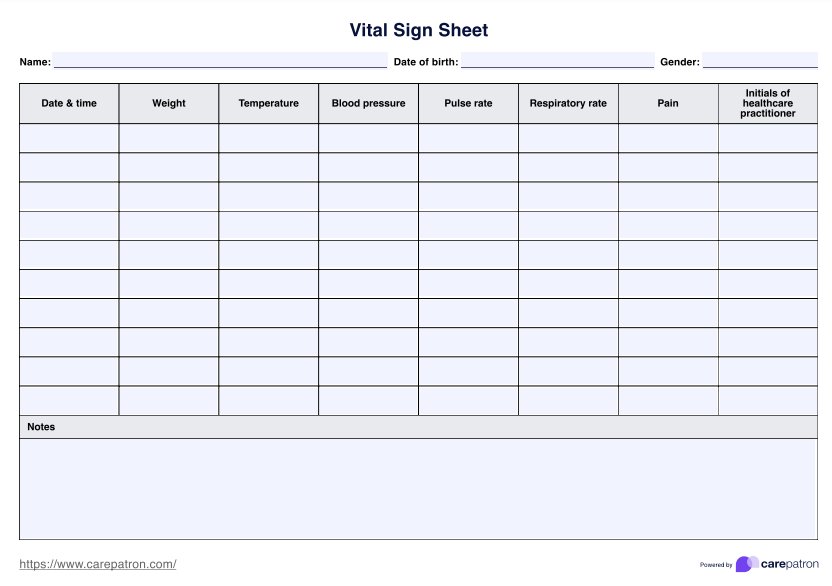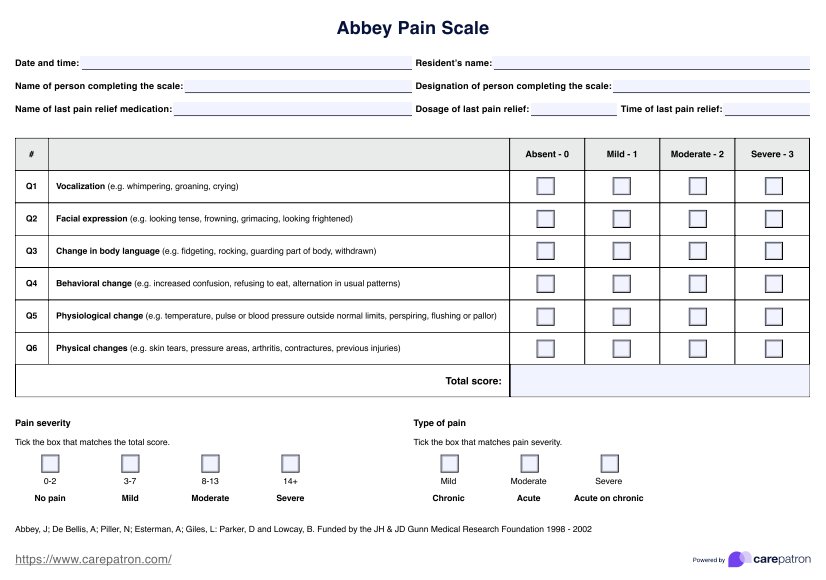Yergason's Test
Learn about the Yergason Test, one of the clinical examination tests used to diagnose shoulder injuries. Download a free printable template and see an example.


What is a Yergason's Test?
Yergason's or Yergason Test is a medical examination to assess the integrity of the transverse humeral ligament and the bicipital groove in the shoulder joint.
Familiarity with the relevant anatomy is crucial to understanding the test. The biceps brachii muscle has two heads: the long head and the short head. The long-head tendon passes through the bicipital groove of the humerus and is stabilized by the transverse humeral ligament. The shoulder joint's structures, including the glenoid labrum and rotator cuff, also play significant roles in shoulder function and stability.
It is commonly used to evaluate patients with shoulder pain, especially those with suspected biceps tendonitis, superior labrum anterior and posterior (SLAP lesions), and bicipital tendinopathy. It is one of several tests used to assess the shoulder joint and its surrounding structures, and the test results can help guide the patient's treatment.
Yergason's Test Template
Yergason's Test Example
How does this printable Yergason's Test work?
The printable Yergason's Test is a free resource that provides a standardized test for detecting biceps pathology. Here are the steps involved in doing the test:
Step 1: Download the test
The printable Yergason's Test can be downloaded from the link we provided. If you want a physical copy, you can print it.
Step 2: Gather patient information
Gather patient information and history. Key questions should focus on the onset, duration, and nature of shoulder pain, any history of trauma or overuse, and associated symptoms like clicking or popping. Physical examination may reveal tenderness over the bicipital groove, swelling, and limited range of motion, suggesting the need for the Yergason Test.
Step 3: Perform the test
Ask the patient to sit or stand with their arm at their side, elbow flexed at a 90-degree angle, and forearm pronated (palm facing down). Stand in front of the patient and place one hand on the wrist and the other on the elbow to stabilize the arm. Instruct the patient to attempt to supinate their forearm (rotate the palm up) against the resistance you provide while simultaneously applying resistance by pressing down on their wrist.
Step 4: Assess for pain or discomfort
Observe the patient's response for any signs of pain, discomfort, or clicking sounds during the maneuver. Additionally, feel for any movement of the bicipital tendon out of the bicipital groove, which may indicate a positive test.
Step 5: Record results
Note the patient's response and document the test results in their medical record. Ensure all observations, including pain levels, sounds, and tendon movement, are accurately recorded for future reference and diagnosis. A negative test result indicates that the biceps tendon is likely intact and adequately positioned within the bicipital groove. In contrast, a positive test result may indicate a problem with the biceps tendon, such as biceps tendonitis or bicipital instability.
Who can benefit from this test?
Understanding who can benefit from Yergason's Test is crucial for diagnosing and treating shoulder conditions. Here are five groups that can benefit from this test:
- Patients with shoulder pain: Individuals experiencing shoulder pain can benefit from Yergason's Test to identify potential issues with the biceps tendon or other structures in the shoulder joint.
- Athletes with overhead movements: Athletes engaged in sports requiring overhead movements, such as baseball pitchers or swimmers, can benefit from this test to assess for biceps tendon pathology due to repetitive stress.
- Workers with overhead tasks: Workers with occupations involving repetitive overhead tasks, like construction workers or painters, may benefit from Yergason's Test to evaluate for shoulder injuries related to their work activities.
- Individuals with recurrent clicking sounds: Those experiencing recurrent clicking sounds in the shoulder joint can benefit from this test to determine if bicipital instability or other issues contribute to their symptoms.
- Healthcare providers: Clinicians and healthcare providers, including physicians, physiotherapists, and sports medicine specialists, can benefit from incorporating Yergason's Test into their diagnostic toolkit for evaluating and managing shoulder pathologies effectively.
By recognizing its applicability across various populations, healthcare providers can better tailor treatments and interventions to improve patient outcomes and shoulder health.
Other diagnostic tests
The Yergason's Test should be part of a comprehensive shoulder examination. You may perform other diagnostic tests to help differentiate between shoulder pathologies.
Here are some tests that might be of help during diagnosis:
- Speed's test: To perform Speed's test, the patient extends their elbow and supinates their forearm while the examiner resists forward shoulder flexion. A positive Speed's test indicates bicipital tendinitis if the patient experiences pain in the bicipital groove area.
- Hawkins-Kennedy test: The test involves flexing the patient's shoulder and elbow to 90 degrees, then internally rotating the shoulder. A positive Hawkins-Kennedy test, indicated by pain, suggests impingement.
- Neer's test: With the scapula stabilized in a depressed position, the examiner flexes the patient's arm fully; anterior shoulder pain suggests subacromial impingement, while posterior shoulder pain suggests internal impingement.
It's worth noting that the test results regarding the patient's overall clinical presentation and medical history should be considered.
Benefits of this free Yergason's Test template
A ready-made Yergason's Test template offers numerous advantages, streamlining the diagnostic process for clinicians and ensuring consistency in test administration. Here are five key benefits:
- Standardization: A template ensures that the test is performed consistently each time, reducing variability and improving the reliability of the results.
- Efficiency: It saves time for healthcare providers by providing clear, step-by-step instructions, allowing for quicker patient assessments.
- Documentation: The template includes sections for recording results, making it easy to document findings accurately and comprehensively in the patient's medical record.
- Accessibility: It is freely available and accessible to all healthcare professionals, promoting widespread use and enhancing diagnostic capabilities across different settings.
- Learning tool: The templates can be used as a learning tool for medical students and residents studying the evaluation and treatment of shoulder injuries.
Ensure you document and update all essential information about your patient during clinical evaluation.
Also, applying this clinical evaluation template and medical record template can enrich your practice and elevate client satisfaction
Commonly asked questions
A Yergason's Test typically takes a few minutes to perform during a clinical examination.
The Yergason's Test is commonly used by healthcare providers, including physicians, physiotherapists, and sports medicine specialists, to assess shoulder pathology.
The benefits of the Yergason's Test include its ability to help diagnose biceps tendon pathology, assess bicipital stability, guide treatment decisions, and contribute to a comprehensive shoulder examination.















































































































